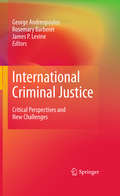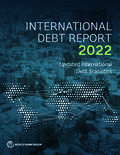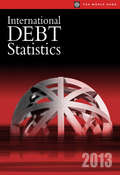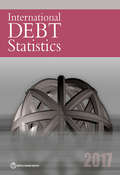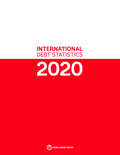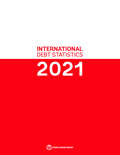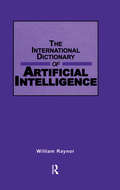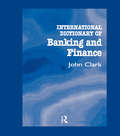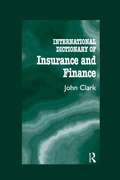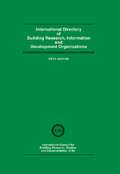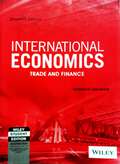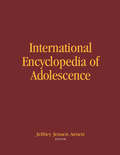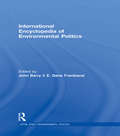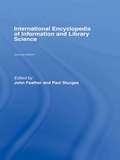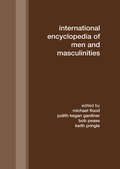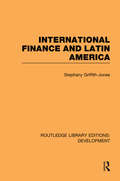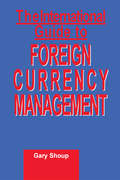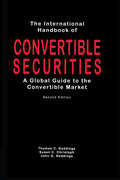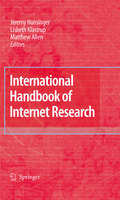- Table View
- List View
International Criminal Justice
by Rosemary Barberet James P. Levine George AndreopoulosIn recent years, justice-related and human rights issues have figured more and more prominently on the international political agenda. This expansion of the justice space is a product of a growing demand for accountability in world politics. Whether the issue is addressing heinous crimes such as genocide, war crimes and crimes against humanity in situations of armed conflict, confronting the inability or reluctance of governments to protect their own populations, or responding to the challenges posed by transnational terrorism; the international community has witnessed the proliferation of institutions and mechanisms, as well as the dynamic interplay between domestic and international processes, in the pursuit of justice-sensitive outcomes. International and hybrid tribunals, UN-led and domestic counter-terrorist initiatives, and the use of force for human protection purposes have demarcated the space within which ethical, political, and legal debates have unfolded in the quest for a more humane world order. The contributors of International Criminal Justice: Theoretical and Legal Perspectives address some of the most important issues and debates involved in this quest, and assess the merits of contending approaches to the promotion of international justice norms. This volume will contribute to the ongoing debate on the challenges, as well as opportunities, facing the justice agenda in its effort to shape developments in an increasingly interdependent world.
International Debt Report 2022: Updated International Debt Statistics (International Debt Report)
by World BankThe 'International Debt Report' (IDR), formerly 'International Debt Statistics' (IDS), is a longstanding annual publication of the World Bank featuring external debt statistics and analysis for the 121 low- and middle-income countries that report to the World Bank Debtor Reporting System. IDR 2022 includes (1) analyses of external debt stocks and flows from 2010 to 2021 for these countries; (2) an assessment of the evolution of the creditor composition of external debt over the past decade with particular emphasis on the emergence of nontraditional bilateral creditors and private creditors and how this has impacted the structure of borrowers' public debt portfolios and debt servicing costs, which complicates the debt restructuring process; (3) a focus on how the World Bank has sought to enhance data quality and transparency against the backdrop of rapidly changing global debt dynamics (including an increase in commercial borrowing, nontraditional lenders, and new instruments) that contribute to debt transparency issues; (4) tables and charts detailing debtor and creditor composition of debt stock and flows, terms volume, and terms of new commitments, maturity structure of future debt service payments and debt burdens, measured in relation to gross national income and export earnings for each country; and (5) a one-page summary for each country, plus global, regional, and income-group aggregates showing debt stocks and flows, relevant debt indicators, and metadata for 6 years (2010 and 2017†“2021). Unique in its coverage of the important trends and issues fundamental to the financing of low- and middle-income countries, 'International Debt Report 2022' is an indispensable resource for governments, economists, investors, financial consultants, academics, bankers, and the entire development community. For more information on IDR 2022 and related products, please visit the World Bank's Debt Statistics website at www.worldbank.org/debtstatistics.
International Debt Report 2023 (International Debt Report)
by World BankThe International Debt Report (IDR) is a longstanding annual publication of the World Bank featuring external debt statistics and analysis for the 122 countries that report to the World Bank Debtor Reporting System. IDR 2023 is the 50th annual edition and includes (1) analyses of external debt stocks and flows as of end-2022 for these countries; (2) the macroeconomic and debt outlook for 2023 and beyond; (3) a focus on improved public debt transparency and the quality of debt reporting; (4) a discussion of the need for innovative approaches to debt management; (5) a commentary on how the International Debt Statistics database serves as an indispensable resource for researchers and policy makers; and (6) a one-page snapshot of relevant debt indicators and summary of debt stocks and flows for six years (2010 and 2018†“22) for each country, plus global income group and regional aggregates. Unique in its coverage of the important trends and issues fundamental to the financing of low- and middle-income countries, IDR 2023 is an indispensable resource for governments, economists, investors, financial consultants, academics, bankers, and the entire development community. For more information on IDR 2023 and related products, please visit the World Bank’s Debt Statistics website at www.worldbank.org/debtstatistics.
International Debt Statistics 2013: External Debt of Developing Countries
by World BankInternational Debt Statistics (IDS) 2013 is a continuation of the World Bank's publications Global Development Finance, Volume II (1997 through 2009) and the earlier World Debt Tables (1973 through 1996). IDS 2013 provides statistical tables showing the external debt of 128 developing countries that report public and publicly guaranteed external debt to the World Bank's Debtor Reporting System (DRS). It also includes tables of key debt ratios for individual reporting countries and the composition of external debt stocks and flows for individual reporting countries and regional and income groups along with some graphical presentations. IDS 2013 draws on a database maintained by the World Bank External Debt (WBXD) system. Longer time series and more detailed data are available from the World Bank open databases, which contain more than 200 time series indicators, covering the years 1970 to 2011 for most reporting countries, and pipeline data for scheduled debt service payments on existing commitments to 2019. International Debt Statistics 2013 is unique in its coverage of the important trends and issues fundamental to the financing of the developing world. This report is an indispensible resource for governments, economists, investors, financial consultants, academics, bankers, and the entire development community. In addition, International Debt Statistics will showcase the broader spectrum of debt data collected and compiled by the World Bank. These include the high frequency, quarterly external debt database (QEDS) and the quarterly public sector database (QPSD) developed in partnership with the International Monetary Fund and launched by the World Bank.
International Debt Statistics 2014
by World BankInternational Debt Statistics (IDS) 2014 is a continuation of the World Bank's publications Global Development Finance, Volume II (1997 through 2009) and the earlier World Debt Tables (1973 through 1996). IDS 2014 provides statistical tables showing the external debt of 128 developing countries that report public and publicly guaranteed external debt to the World Bank's Debtor Reporting System (DRS). It also includes tables of key debt ratios for individual reporting countries and the composition of external debt stocks and flows for individual reporting countries and regional and income groups along with some graphical presentations. IDS 2014 draws on a database maintained by the World Bank External Debt (WBXD) system. Longer time series and more detailed data are available from the World Bank open databases, which contain more than 200 time series indicators, covering the years 1970 to 2012 for most reporting countries, and pipeline data for scheduled debt service payments on existing commitments to 2019. International Debt Statistics 2014 is unique in its coverage of the important trends and issues fundamental to the financing of the developing world. This report is an indispensable resource for governments, economists, investors, financial consultants, academics, bankers, and the entire development community. In addition, International Debt Statistics will showcase the broader spectrum of debt data collected and compiled by the World Bank. These include the high frequency, quarterly external debt database (QEDS) and the quarterly public sector database (QPSD) developed in partnership with the International Monetary Fund and launched by the World Bank.
International Debt Statistics 2020 (International Debt Statistics)
by World BankInternational Debt Statistics {IDS) is a longstanding annual publication of the World Bank featuring external debt statistics and analysis for the 123 low- and middle-income countries that report to the World Bank Debt Reporting System (DRS). The content coverage of IDS 2020 includes:.1) a user guide describing the IDS tables and content, definitions and rationale for country and income groupings, data notes, and description of the additional resources and comprehensive datasets available to users online, 2) a brief overview analyzing global trends in debt stocks and debt flows to low- and middleincome countries within the framework of aggregate capital flows (debt and equity), 3) a feature story on lending by the World Bank in recognition of the institution's 75th anniversary, 4) tables and charts detailing debtor and creditor composition of debt stock and flows, terms volume and terms of new commitments, maturity structure of future debt service payments and debt burdens, measured in relation to GNI and export earnings for each country, and 5) one-page summaries per country, plus global, regional and income-group aggregates showing debt stocks and flows, relevant debt indicators and m_etadata for 5 years (2014-2018).
International Debt Statistics 2021 (International Debt Statistics)
by World BankInternational Debt Statistics (IDS), a long-standing annual publication of the World Bank, features external debt statistics and analysis for the 120 low- and middle-income countries that report to the World Bank Debtor Reporting System. IDS 2021 includes (1) an overview analyzing global trends in debt stocks of and debt flows to low- and middle-income countries within the framework of aggregate capital flows (debt and equity); (2) a feature story on the World Bank and International Monetary Fund Debt Service Suspension Initiative in response to the COVID-19 pandemic; (3) tables and charts detailing debtor and creditor composition of debt stock and flows, terms of new commitments, and maturity structure of future debt service payments and debt burdens, measured in relation to gross national income and export earnings for each country; (4) one-page summaries per country, plus global, regional, and income group aggregates showing debt stocks and flows, relevant debt indicators, and metadata for six years (2009 and 2015†“19); and (5) a user guide describing the tables and content, definitions and rationale for the country and income groupings used in the report, data notes, and information about additional resources and comprehensive data sets available to users online. Unique in its coverage of the important trends and issues fundamental to the financing of low- and middle-income countries, IDS 2021 is an indispensable resource for governments, economists, investors, financial consultants, academics, bankers, and the entire development community. For more information on IDS 2021 and related products, please visit the World Bank’s Data Catalog at https://datacatalog.worldbank.org/dataset/international-debt-statistics.
International Debt Statistics 2022 (International Debt Statistics)
by World BankInternational Debt Statistics (IDS), a long-standing annual publication of the World Bank, features external debt statistics and analysis for the 123 low- and middle-income countries that report to the World Bank Debtor Reporting System. This 2022 edition of IDS includes (1) an overview analyzing global trends in debt stocks of and debt flows to low- and middle-income countries within the framework of aggregate capital flows (debt and equity); (2) an evaluation of the volume of debt service deferred through the Debt Service Suspension Initiative (DSSI) in 2020 and the 2021 extension for participating eligible countries, as well as borrowing trends and debt service costs for DSSI-eligible countries that did not participate in the initiative; (3) tables and charts detailing debtor and creditor composition of debt stock and flows, terms of new commitments, and maturity structure of future debt service payments and debt burdens, measured in relation to gross national income and export earnings for each country; (4) one-page summaries per country, plus global, regional, and income group aggregates showing debt stocks and flows, relevant debt indicators, and metadata for six years (2010 and 2016†“20); and (5) a user guide describing the tables and content, definitions and rationale for the country and income groupings used in the report, data notes, and information about additional resources and comprehensive datasets available to users online. Unique in its coverage of the important trends and issues fundamental to the financing of low- and middle-income countries, IDS 2022 is an indispensable resource for governments, economists, investors, financial consultants, academics, bankers, and the entire development community. For more information on IDS 2022 and related products, please visit the World Bank's Data Catalog at https://datacatalog.worldbank.org/dataset/international-debt-statistics.
International Dictionary of Artificial Intelligence
by William RaynorFirst Published in 1998. Artificial intelligence is increasingly employed in all areas of human endeavor and industry. Anticipating the needs of professionals, researchers, and students alike, International Dictionary of Artificial Intelligence defines and illustrates over 2,500 terms and provides detailed explanations of major concepts as well as topics in related disciplines. The Dictionary also contains an annotated bibliography and an extensive appendix of World Wide Web sites devoted to the latest trends and developments in the world of artificial intelligence.
International Dictionary of Banking and Finance (International Dictionary Ser.)
by John ClarkSimple, concise, and up-to-date, the International Dictionary of Banking and Finance lists thousands of key words, terms, acronyms, and proper names that bankers, financial managers, students, and business teachers use every day. Arranged in alphabetical order, the terms are precisely defined--so that readers may comprehend the meanings in terms of daily business activities or study. Designed with the student as well as the executive in mind, the Dictionary includes terms and concepts from around the world, and it cross-references related terms to provide insight and clarification. Subjects covered include: investments; finance; commercial and mortgage banking; exporting; business structure; and a host of other broad business categories.
International Dictionary of Insurance and Finance (International Dictionary Ser.)
by John ClarkFirst Published in 1999. Routledge is an imprint of Taylor & Francis, an informa company.
International Dictionary of University Histories
by Carol Summerfield Mary Elizabeth DevineModeled on Fitzroy Dearborn's highly successful International Dictionary of Historic Places , the International Dictionary of University Histories provides basic information on 200 institutions--location, description, sources of further information--followed by an extensive 3000 to 5000 word essay on each university's history. Entries on each university conclude with a Further Reading list, and most entries are illustrated. Coverage is world-wide, and entries range from the great medieval institutions (Oxford, Heidelberg, the Sorbonne) to the great historic universities of the United States, to the newer universities of Australia and South Africa, to the lesser-known universities of India, China, and Japan. More than 200 writers, researchers and archival departments of the universities themselves have contributed to the Dictionary . Entries include those universities with the most fascinating histories and those that have played important roles in the development of their own countries and in the furtherance of world scholarship.
International Directory of Building Research Information and Development Organizations
by International Council for Building Research, Studies and DocumentationEvery entry follows a standard pattern: after the address and telephone number of the institution there is a brief description of its history and financial support, followed by the names of the senior staff, total number of staff, the institution's structure and services, its main research programmes and a list of its publications. For this new edition a subject index has been added, allowing the reader to identify centres of research activity on individual construction topics throughout the world. The world-wide investment in construction industry research is enormous. This unique directory is a guidebook to that investment which will enable its readers to isolate sources of advice on practical problems, information on national standards and requirements and potential research collaborators.
International Economics - Trade and Finance (Part 1) Eleventh Edition
by Dominick SalvatoreSalvatore’s International Economics provides information about fundamental institutions and relationships that affect quality of life and provides a framework for thinking through and understanding the process of decision making. Furthermore, the text is designed as a primary text for an introduction to basic economics or principles of economics and offers a balanced presentation of macroeconomics and microeconomics.
International Economics - Trade and Finance (Part 2) Eleventh Edition
by Dominick SalvatoreSalvatore’s International Economics provides information about fundamental institutions and relationships that affect quality of life and provides a framework for thinking through and understanding the process of decision making. Furthermore, the text is designed as a primary text for an introduction to basic economics or principles of economics and offers a balanced presentation of macroeconomics and microeconomics.
International Encyclopedia of Adolescence
by Jeffrey Jensen ArnettIn pre-industrial societies, people moved from childhood to adulthood directly, getting married and going to work early in life. Although this still holds true for many cultures, in countries such as the USA or Japan, adolescence has become a specific stage of life, where young people are cultural trendsetters and market drivers. The International Encyclopedia of Adolescence is an exhaustive socio-cultural survey of young people around the world. The focus is cultural and historical, and the work offers a rarely found worldwide perspective. Entries are compiled by experts from many fields of study, including anthropology, history, psychology, and sociology. Unlike existing works, the Encyclopedia does not stress biological or psycho-pathological issues. It addresses myths and realities of adolescence by looking at the actual life of young people in regions as varied as Iran, India, France, the USA, or Japan. It also explains how teen cultures have developed in some countries and how young people deal with the conflicts between tradition and modernity in others. Country coverage examines cultural beliefs, gender, personal and cultural identity, relationships (familial), friends and peers, love and sexuality, education, work, media, problems, and outlook for the future, plus topics particular to the culture or region discussed.
International Encyclopedia of Economic Sociology
by Jens Beckert Milan ZafirovskiThe International Encyclopedia of Economic Sociology is the first encyclopedia in the field and a timely response to the surge of interest in economic sociology over the last 30 years. Economic Sociology deals with the multiple and complex relations between economy and society. In particular, it focuses on the impact of social, political and cultur
International Encyclopedia of Environmental Politics
by John Barry E. Gene FranklandWhy care about the environment? Is the earth's climate really changing for the worse? What are CFCs exactly? And who or what is the WTO? What are the causes of environmental problems? Who are the main actors, and what are the main ideas and issues in international environmental politics? Which countries have the best/worst environmental record and policies?The International Encyclopedia of Environmental Politics is the essential reference source to enable all those with an interest in the politics of the environment - particularly students and academics working within political science - to answer these questions, and to explore many other related topics in international environmental politics. It will be welcomed as an essential teaching resource and a trusty companion to independent study.Written by a team of international experts, the Encyclopedia is vital for fact-checking, provides authoritative initial orientation to a particular topic or issue and will serve as a solid starting point for wider explanation. With over 300 fully cross-referenced entries, many of which are followed with suggestions for further reading, the Encyclopedia includes: * Country and regional entries, with country entries giving a concise overview of the history, main actors, issues and policies related to its environmental politics* Normative and ethical dimensions of environmental politics, from animal rights, social and global justice to deep ecology* Environmental movements, organizations, struggles and actors from local to international levels * Issues in international environmental politics such as global warming, biodiversity, trade and the environment* Prominent individuals (historical and current) who have inspired or been actively involved in international environmental politics - such as Mahatma Gandhi, Petra Kelly, Vandana Shiva and Aldo Leopold * Central topics and issues in environmental politics - such as global warming, globalization, wildlife preservation, eco-taxes, energy production and consumption, sustainable development and the World Trade Organisation
International Encyclopedia of Information and Library Science
by John Feather Paul SturgesThe International Encyclopedia of Information and Library Science was published to widespread acclaim in 1996, and has become the major reference work in the field. This eagerly awaited new edition has been fully revised and updated to take full account of the many and radical changes which have taken place since the Encyclopedia was originally conceived. With nearly 600 entries, written by a global team of over 150 contributors, the subject matter ranges from mobile library services provided by camel and donkey transport to search engines, portals and the World Wide Web.The new edition retains the successful structure of the first with an alphabetical organization providing the basic framework of a coherent collection of connected entries. Conceptual entries explore and explicate all the major issues, theories and activities in information and library science, such as the economics of information and information management. A wholly new entry on information systems, and enhanced entries on the information professions and the information society, are key features of this new edition. Topical entries deal with more specific subjects, such as collections management and information services for ethnic minorities. New or completely revised entries include a group of entries on information law, and a collection of entries on the Internet and the World Wide Web.
International Encyclopedia of Men and Masculinities
by Bob Pease Keith Pringle Michael Flood Judith Kegan GardinerThe International Encyclopedia of Men and Masculinities offers a comprehensive guide to the current state of scholarship about men, masculinities, and gender around the world. The Encyclopedia's coverage is comprehensive across three dimensions: areas of personal and social life, academic disciplines, and cultural and historical contexts and formations. The Encyclopedia: examines every area of men's personal and social lives as shaped by gender covers masculinity politics, the men's groups and movements that have tried to change men's roles presents entries on working with particular groups of boys or men, from male patients to men in prison incorporates cross-disciplinary perspectives on and examinations of men, gender and gender relations gives comprehensive coverage of diverse cultural and historical formations of masculinity and the bodies of scholarship that have documented them. The Encyclopedia of Men and Masculinities is composed of over 350 free-standing entries written from their individual perspectives by eminent scholars in their fields. Entries are organized alphabetically for general ease of access but also listed thematically at the front of the encyclopedia, for the convenience of readers with specific areas of interest.
International Encyclopedia of Terrorism
by Martha Crenshaw John PimlottThis timely reference book places the growing 20th century phenomenon of terrorism in an historical context. Starting with the use of assassination in Ancient Greece and including the recent bombing of the American military complex in Dhahran, Saudi Arabia, this encyclopedia covers the globe in its presentation of all aspects of terrorism: history, theories of, types of, and responses to, as well methods and techniques. There is a chronology of major terrorist events from 1945, an A to Z listing of terrorist groups and leaders, a select bibliography, and indexes (general, name, and geographical).
International Finance and Latin America (Routledge Library Editions: Development)
by Stephany Griffith-JonesThis reissue, initially published in 1984, examines the evolution of international financial flows to Latin America since 1945, along with their implications for National Development . The book describes how, in each of the first three decades since the war, a new agency emerged (foreign investors in the 1950s, official aid agencies in the 1960s and multinational banks in the 1970s) which was willing to play a dynamic role in generating new financial flows to the region. The lack of such an agent in the 1980s, combined with a reluctance on the part of former investors to maintain their level of assistance culminated in an economic debt crisis in Latin America which this work seeks to address, asking the crucial question: what measures should be taken – both nationally and internationally – to deal with this critical issue , in a way that will both encourage Latin American Development and avoid a major international financial crisis?
International Guide to Foreign Currency Management
by Gary ShoupFinancial managers rarely find a one-stop source for a complete course in currency management. Expanding on his work, Currency Risk Management, Gary Shoup builds a practical foreign currency management program. This extensive text covers everything managers and their consultants need to implement a program, from trends in exchange rates to understanding pricing determinants. He discusses in detail the market for currencies, price forecasting, exposure and risk management, managing accounting exposure, and managing strategic exposure.
International Handbook of Convertible Securities: A Global Guide To The Convertible Market
by Thomas Noddings Susan C. Christoph John G. NoddingsFirst Published in 2001. Routledge is an imprint of Taylor & Francis, an informa company.
International Handbook of Internet Research
by Lisbeth Klastrup Matthew Allen Jeremy HunsingerThis handbook, the first of its kind, is a detailed introduction to the numerous academic perspectives we can apply to the study of the internet as a political, social and communicative phenomenon. Covering both practical and theoretical angles, established researchers from around the world discuss everything: the foundations of internet research appear alongside chapters on understanding and analyzing current examples of online activities and artifacts. The material covers all continents and explores in depth subjects such as networked gaming, economics and the law. The sheer scope and breadth of topics examined in this volume, which ranges from on-line communities to e-science via digital aesthetics, are evidence that in today's world, internet research is a vibrant and mature field in which practitioners have long since stopped considering the internet as either an utopian or dystopian "new" space, but instead approach it as a medium that has become an integral part of our everyday culture and a natural mode of communication.
